Study shows that the majority of children poisoned by lead during renovations were poisoned by their own parents doing the work.
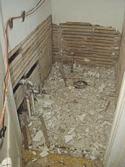 According to Medscape Today, investigations conducted during 2006-2007 in New York state (excluding New York City) for 972 children with Blood Lead Levels (BLLs) ≥20 µg/dL, RRP activities were identified as the probable source of lead exposure in 139 (14%) of the 972 children. Resident owners or tenants performed 66% of the RRP work that was determined to have caused the poisoning, which often included sanding and scraping (42%), removal of painted materials or structures (29%), and other activities (29%) that can release particles of lead-based paint. Although this study only included one state, we can probably assume other states with older housing would likely have similar findings.
According to Medscape Today, investigations conducted during 2006-2007 in New York state (excluding New York City) for 972 children with Blood Lead Levels (BLLs) ≥20 µg/dL, RRP activities were identified as the probable source of lead exposure in 139 (14%) of the 972 children. Resident owners or tenants performed 66% of the RRP work that was determined to have caused the poisoning, which often included sanding and scraping (42%), removal of painted materials or structures (29%), and other activities (29%) that can release particles of lead-based paint. Although this study only included one state, we can probably assume other states with older housing would likely have similar findings.
From this information we can deduct the following. 86% or 836 of the poisoned children were poisoned by exposure to lead in some way other than RRP activities. Also, of the children proven to be poisoned by RRP activities, 92 were poisoned by their own parents doing the renovation work, leaving a total of 47 children poisoned by RRP activities performed by someone other than their parents. The study did not specify who these others were. It is likely that most would be renovation companies, but a good number could also have been landlords or property developers doing their own work.
 Although I agree renovators should be required to work lead-safe, I suggest that the RRP rule falls way too short in preventing lead poisoning. Allowing home owners and tenants to do RRP work without the knowledge and proper training required should be considered a travesty. Without understanding how lead poisoning happens and how to perform the work in a lead-safe manner, these parents are often unknowingly poisoning their children.
Although I agree renovators should be required to work lead-safe, I suggest that the RRP rule falls way too short in preventing lead poisoning. Allowing home owners and tenants to do RRP work without the knowledge and proper training required should be considered a travesty. Without understanding how lead poisoning happens and how to perform the work in a lead-safe manner, these parents are often unknowingly poisoning their children.
Sadly, many children are also poisoned by dads and moms who do RRP work for a living. Read this blog for a true story about a contractor who, while attending the required certified renovator training, panicked when he discovered he might be poisoning his own children. I wonder how many of the 972 children in the study mentioned above might have been poisoned by hugging their daddy when he got home from work. I know this happened at my home when I was working in the field. The good news is that the story is evidence that education can make a difference when it comes to preventing lead poisoning.

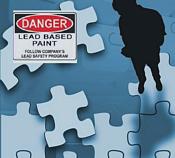 Looking for accurate information about the EPA RRP rule?
Looking for accurate information about the EPA RRP rule? 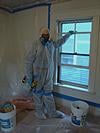 Renovators doing RRP work definitely need to know the difference between renovations and abatement. Unless specifically licenced to do so, renovators are not allowed to do abatement work. Renovators would be wise to make sure property owners know the difference as well. Employees should also be clear on the difference between renovations vs abatement, so as not to misrepresent the work they are doing when discussing a remodeling project with clients and prospects.
Renovators doing RRP work definitely need to know the difference between renovations and abatement. Unless specifically licenced to do so, renovators are not allowed to do abatement work. Renovators would be wise to make sure property owners know the difference as well. Employees should also be clear on the difference between renovations vs abatement, so as not to misrepresent the work they are doing when discussing a remodeling project with clients and prospects.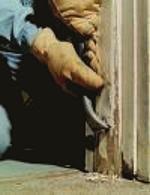 A project resulting in the permanent removal of lead paint hazards, conducted by a company who, through its name or promotional literature, represents, or advertises to be in the business of performing lead paint activities.
A project resulting in the permanent removal of lead paint hazards, conducted by a company who, through its name or promotional literature, represents, or advertises to be in the business of performing lead paint activities. Abatements are not covered by the RRP rule.
Abatements are not covered by the RRP rule. Massachusetts, one of the states delegated by EPA to administer and enforce the RRP rule, released a new form and protocol to be used by Massachusetts licensed lead inspectors when doing testing for lead prior to a RRP project. Although under the Massachusetts and EPA RRP rules a certified renovator can use EPA approved test kits to do this testing, as an alternative some home owners and renovators may elect to have the testing done by a lead testing professional. The following article was written by
Massachusetts, one of the states delegated by EPA to administer and enforce the RRP rule, released a new form and protocol to be used by Massachusetts licensed lead inspectors when doing testing for lead prior to a RRP project. Although under the Massachusetts and EPA RRP rules a certified renovator can use EPA approved test kits to do this testing, as an alternative some home owners and renovators may elect to have the testing done by a lead testing professional. The following article was written by 

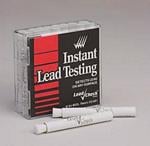 RRP Assessment report or from a Lead Safe Renovator who has used an EPA approved lead based paint test kit to test surfaces for lead, to all tenants or potential buyers.
RRP Assessment report or from a Lead Safe Renovator who has used an EPA approved lead based paint test kit to test surfaces for lead, to all tenants or potential buyers.
 Rhode Island has been operating a Lead-Safe Remodeler/Renovator Program since 2001 and has licensed over 1,500 Lead-Safe Remodeler/Renovators. In 2010, the Environmental Protection Agency (EPA) created its own Lead-Safe Remodeler/Renovator Program, known as the Lead-Based Paint Renovation, Repair, and Painting Rule. Rhode Island was the first New England state granted authority by EPA to continue its state Remodeler/Renovator program.
Rhode Island has been operating a Lead-Safe Remodeler/Renovator Program since 2001 and has licensed over 1,500 Lead-Safe Remodeler/Renovators. In 2010, the Environmental Protection Agency (EPA) created its own Lead-Safe Remodeler/Renovator Program, known as the Lead-Based Paint Renovation, Repair, and Painting Rule. Rhode Island was the first New England state granted authority by EPA to continue its state Remodeler/Renovator program.  Rhode Island's RRP Rule applies to contractors, landlords, property managers, homeowners, and anyone else who disturbs painted surfaces on pre-1978 homes or child care facilities. This includes general contractors as well as special trade contractors, such as painters, plumbers, carpenters, and electricians.
Rhode Island's RRP Rule applies to contractors, landlords, property managers, homeowners, and anyone else who disturbs painted surfaces on pre-1978 homes or child care facilities. This includes general contractors as well as special trade contractors, such as painters, plumbers, carpenters, and electricians.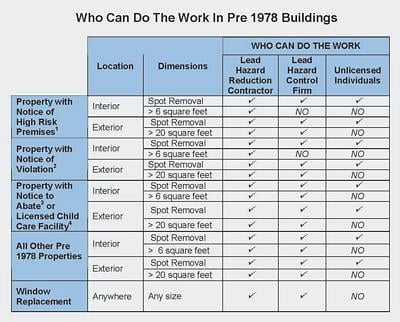
 When work is complete, Lead-Safe Remodeler/Renovators and their workers must:
When work is complete, Lead-Safe Remodeler/Renovators and their workers must: If home buyers aren’t aware of lead paint or the implications of buying a property that has or may have lead paint, a good home inspector may likely provide such knowledge.
If home buyers aren’t aware of lead paint or the implications of buying a property that has or may have lead paint, a good home inspector may likely provide such knowledge.  Home inspectors will help cause compliance with the EPA RRP rule in a few ways. First, they will likely make home buyers aware of the fact that if built before 1978, the home may likely contain lead paint. The only way to verify if lead paint is present is to do a lead test. Inspectors can suggest their clients ask the seller if the home has been tested and if it has to obtain a copy of the required lead inspection report. Next, if the home does have lead, or it hasn’t been tested, inspectors should inform the buyers that any renovations to the home would need to be done using lead-safe work practices. This will have two effects. The first would be to let the buyer know that lead-safe work practices are required should they be planning any renovations after purchasing the home. Second, and most critical, would be to verify that any recent renovations done at the home were done using lead-safe work practices and to verify this by making sure who ever did the work did it in compliance with the EPA RRP requirements. Again, requesting a copy of the
Home inspectors will help cause compliance with the EPA RRP rule in a few ways. First, they will likely make home buyers aware of the fact that if built before 1978, the home may likely contain lead paint. The only way to verify if lead paint is present is to do a lead test. Inspectors can suggest their clients ask the seller if the home has been tested and if it has to obtain a copy of the required lead inspection report. Next, if the home does have lead, or it hasn’t been tested, inspectors should inform the buyers that any renovations to the home would need to be done using lead-safe work practices. This will have two effects. The first would be to let the buyer know that lead-safe work practices are required should they be planning any renovations after purchasing the home. Second, and most critical, would be to verify that any recent renovations done at the home were done using lead-safe work practices and to verify this by making sure who ever did the work did it in compliance with the EPA RRP requirements. Again, requesting a copy of the  Additionally, if the work was done by the home owners themselves, or perhaps was done illegally by a non-complaint contractor, the only way to find out if the work may have contaminated the home with lead would be to have the home tested by a
Additionally, if the work was done by the home owners themselves, or perhaps was done illegally by a non-complaint contractor, the only way to find out if the work may have contaminated the home with lead would be to have the home tested by a 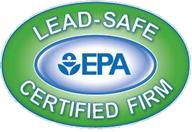
 Home buyers, investors and realtors will likely drive awareness about lead and the new EPA RRP rule up. But, at the same time, such awareness will drive the values of pre-1978 properties down. If unaware of the additional considerations of risks, liability and costs related to the RRP, realtors will likely walk into a hornet’s nest.
Home buyers, investors and realtors will likely drive awareness about lead and the new EPA RRP rule up. But, at the same time, such awareness will drive the values of pre-1978 properties down. If unaware of the additional considerations of risks, liability and costs related to the RRP, realtors will likely walk into a hornet’s nest. 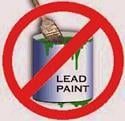 A buyer’s willingness to purchase a property that contains lead will definitely be effected as a result of the RRP rule. First, once word gets out, the health risks of lead paint and related liabilities will cause many buyers to bypass any consideration of pre-1978 properties. As the supply goes up, the prices of these properties will go down. Also, investors won’t like the added costs of owning such properties, particularly if the value of those properties is less likely to increase over time as compared to properties without lead. This too will lower property values to a point where the value of certain properties may only be in the land they sit on, less the cost to get rid of the original lead infused structure.
A buyer’s willingness to purchase a property that contains lead will definitely be effected as a result of the RRP rule. First, once word gets out, the health risks of lead paint and related liabilities will cause many buyers to bypass any consideration of pre-1978 properties. As the supply goes up, the prices of these properties will go down. Also, investors won’t like the added costs of owning such properties, particularly if the value of those properties is less likely to increase over time as compared to properties without lead. This too will lower property values to a point where the value of certain properties may only be in the land they sit on, less the cost to get rid of the original lead infused structure.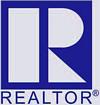 As a side note, realtors as a whole are typically much more professional and proactive than contractors. The majority of them are also dues paying members of one single, well funded and very powerful trade association that represents their interests. I predict that once a good number of realtors catch wind of and understand how the RRP will affect their industry; their association will be working to modify the rule in their favor. This might be of benefit to renovators, but just as easily, it might not.
As a side note, realtors as a whole are typically much more professional and proactive than contractors. The majority of them are also dues paying members of one single, well funded and very powerful trade association that represents their interests. I predict that once a good number of realtors catch wind of and understand how the RRP will affect their industry; their association will be working to modify the rule in their favor. This might be of benefit to renovators, but just as easily, it might not. Many liability insurance policies do not cover lead poisoning or contamination. Renovators should be sure they are working with an agent who is up on the EPA RRP rule and should sit down with their agent to review their coverage needs and options.
Many liability insurance policies do not cover lead poisoning or contamination. Renovators should be sure they are working with an agent who is up on the EPA RRP rule and should sit down with their agent to review their coverage needs and options.  One other area that will likely be of concern is lead coverage in policies for landlords who own pre-1978 properties. Here too, compliance with RRP rules and documentation of work practices used for renovations and repairs will likely become required conditions of obtaining and keeping coverage. The EPA RRP rule may also cause an increase in insurance coverage on properties built prior to 1978, for landlords and maybe even home owners.
One other area that will likely be of concern is lead coverage in policies for landlords who own pre-1978 properties. Here too, compliance with RRP rules and documentation of work practices used for renovations and repairs will likely become required conditions of obtaining and keeping coverage. The EPA RRP rule may also cause an increase in insurance coverage on properties built prior to 1978, for landlords and maybe even home owners. Because of one of the EPA RRP amendments, there is a new requirement regarding documentation. As of the amendment that took effect on July 6th, 2010, when the final invoice for the renovation is delivered, or within 30 days of the completion of the renovation, whichever is earlier, the renovation firm must provide information demonstrating compliance with the training and work practice requirements of the RRP rule to the owner of the building being renovated and, if different, to the occupants of the renovated housing or the operator of the child-occupied facility.
Because of one of the EPA RRP amendments, there is a new requirement regarding documentation. As of the amendment that took effect on July 6th, 2010, when the final invoice for the renovation is delivered, or within 30 days of the completion of the renovation, whichever is earlier, the renovation firm must provide information demonstrating compliance with the training and work practice requirements of the RRP rule to the owner of the building being renovated and, if different, to the occupants of the renovated housing or the operator of the child-occupied facility.


